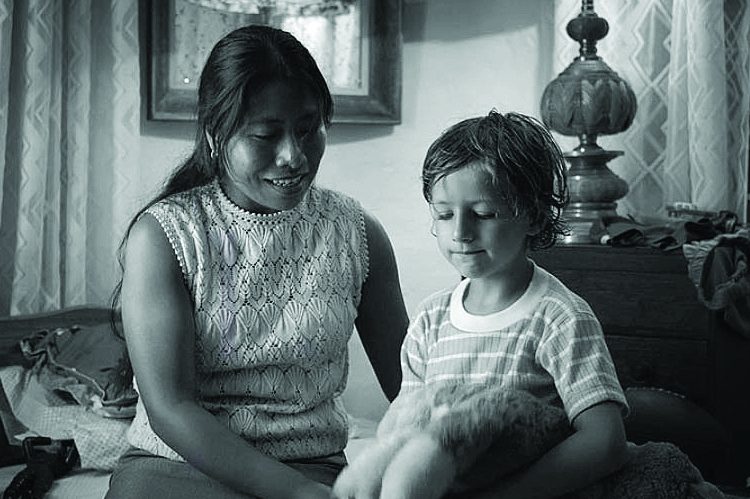‘Roma’ sells ordinary life over thrill
IMDB
AWARD-WINNING — “Roma” is nominated for 10 academy awards, including Best Picture and Actress in a Leading Role.
February 14, 2019
As Leo Dan’s, “Te He Prometido,” which translates to “I have promised you,” blasts through the home of a middle-class household in the Colonia Roma neighborhood of Mexico City, a live-in maid hums to herself and scrubs the house down. With this lulling humdrum the audience is introduced to Cleo, protagonist in “Roma.”.
Director Alfonso Cuarón takes his time establishing Cleo’s mundane day-to-day activities as the film’s first seven minutes are dialogue-free and dedicated to her routine. In highlighting the monotony, Cuarón sets up the most brilliant aspect of the film: the portrayal of authentic ordinariness. It is this brilliance that makes the film worth watching. If you solely value action and thrill, it’s safe to say that this will not hold your interest. If you appreciate a beautifully made, ruminative film rich with intimate honesty, “Roma” will fascinate you and above all, keep you mulling over its intricacies and cinematic choices.
It is clear early on that Cuarón does everything he can to preserve that authenticity, and its effect is profound. From the non-rushed, unvarying routine to the no-holds-barred representation of ubiquitous personal plights to the entirely Spanish dialogue, “Roma” offers a look into a 1970s Mexican household from an entirely veritable point-of-view as opposed to being depicted through a sensationalized Hollywood lens. The household so intimately depicted in this film is not just representative of a single story thought up by a person with a pen in a writer’s room. It represents thousands of other Mexican households, and it does so deliberately. The beauty of the film is that it attaches emotional value to ordinary life rather than pulling at an audience’s love for spectacle.
Still, the film is not all kid-feeding and floor-scrubbing. From unexpected pregnancy to natural disasters to gun violence, cracks begin to appear in the stability of the household. Heart-wrenching depictions of a student demonstration-turned-riot and of a distraught woman holding a dying man in her arms settle the audience with a somberness. Around the focused depiction of this Mexican household, Cuarón sheds light on the social and political hardships of the time.
While the content is certainly not driven by spectacle, the cinematography is remarkable. The entire film is shot in black and white, contributing the film’s air of clarity. As opposed to the classic still camera covering an expansive frame, the camera in “Roma” is often moving, adding a subtly impactful visual layer that allows for a less-staged depiction of Cleo’s story. That this film is semi-autobiographical becomes evident through the cinematography and direction. Cuarón is present through the striking images he draws up from his childhood memories of a maid much like Cleo. More than in most films, the cinematography in “Roma” itself has character.
Where “Roma” lacks in excitement it makes up for in emotion and thoughtful depiction of ordinary life. It immediately puts viewers in a contemplative headspace. You won’t watch this film and feel adrenaline coursing through your veins, but you’ll be left with an appreciation for its beauty and poignancy. That itself makes watching “Roma” a fruitful experience.

































































